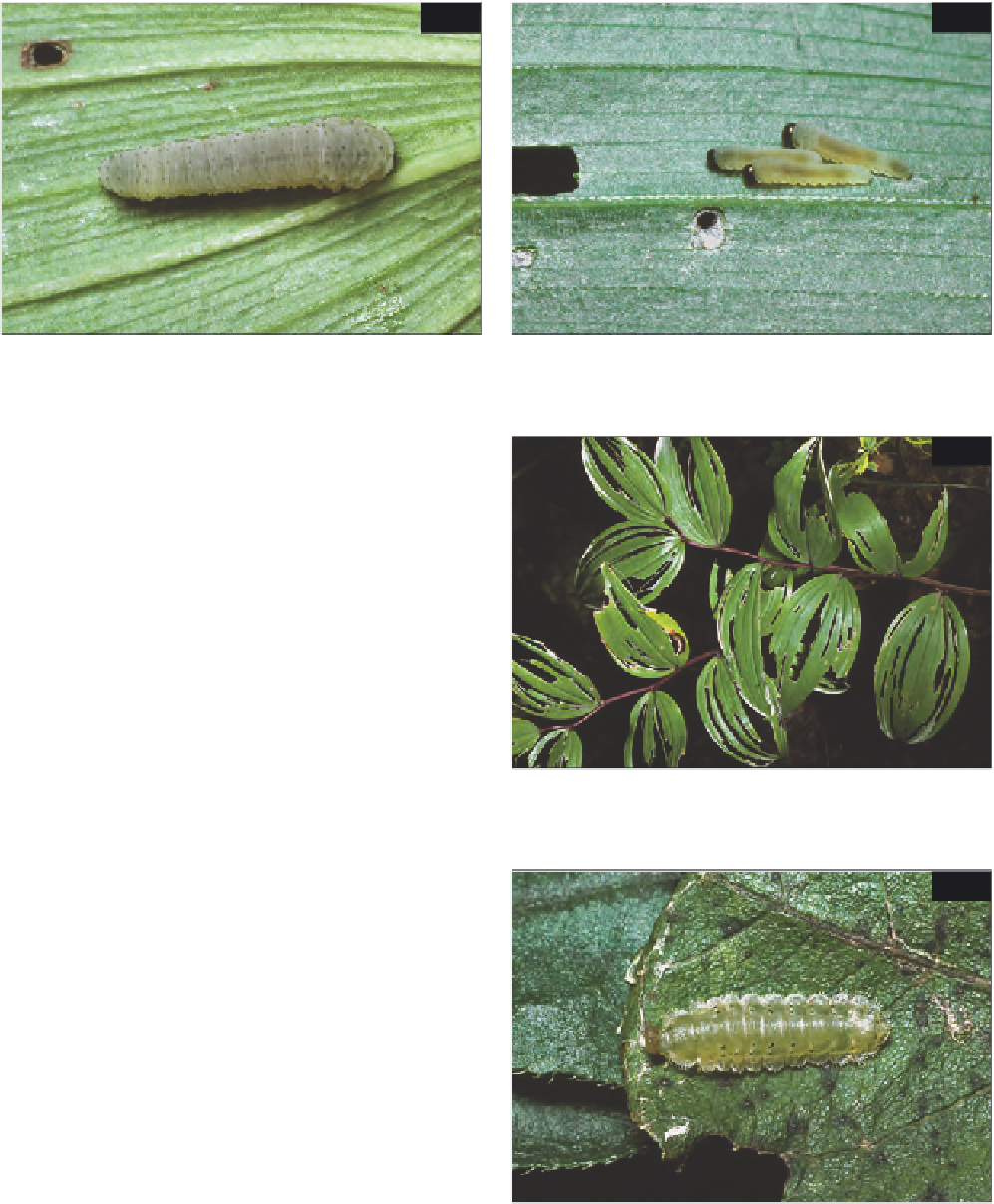Biology Reference
In-Depth Information
1018
1017
1017
Larva of Solomon's seal sawfly (
Phymatocera aterrima
).
1018
Young larvae of Solomon's seal sawfly (
Phymatocera
aterrima
).
1019
inconspicuous; body greyish white and wrinkled,
bearing numerous small, black, spinose verrucae;
thoracic legs black; young larva greenish yellow, with a
prominent black head.
LIFE HISTORY
Adults occur in May and June. Eggs are then deposited
in the leaf stalks of host plants and hatch in June. Larvae
then feed gregariously on the underside of the expanded
leaves, forming elongate holes between the major veins
or devouring the leaf edges. Fully grown larvae enter
the soil to overwinter in silken cocoons. Pupation takes
place in the spring.
1019
Solomon's seal sawfly (
Phymatocera aterrima
) damage
to foliage of
Polygonatum
.
DAMAGE
The larvae cause considerable defoliation, the foliage of
heavily infested plants being totally destroyed.
1020
Platycampus luridiventris
(Fallén) (
1020
)
The unusual, extremely flattened, woodlouse-like larvae
of this locally common species are occasionally noted on
alder (
Alnus
) but are not important pests; the larvae also
occur on birch (
Betula
) and hazel (
Corylus
). They feed on
the underside of leaves from July to October, producing
irregular holes through the leaf blade between the major
veins. When at rest, they lie flat against the lower surface
of a leaf, blending well with their surroundings. Fully
grown larvae are 10-12 mm long and yellowish green,
with pairs of small black spots towards the sides of most
abdominal segments; the lateral borders of each segment
are rounded, and fringed with white hairs; the head is
yellowish green, marked with a pair of yellowish-brown
patches which rise sharply upwards from behind and
slope gently downwards towards the mouthparts. The
mainly black-bodied, orange-legged adults (5-6
1020
Larva of
Platycampus luridiventris
.
mm
long) occur in May and June.

Search WWH ::

Custom Search